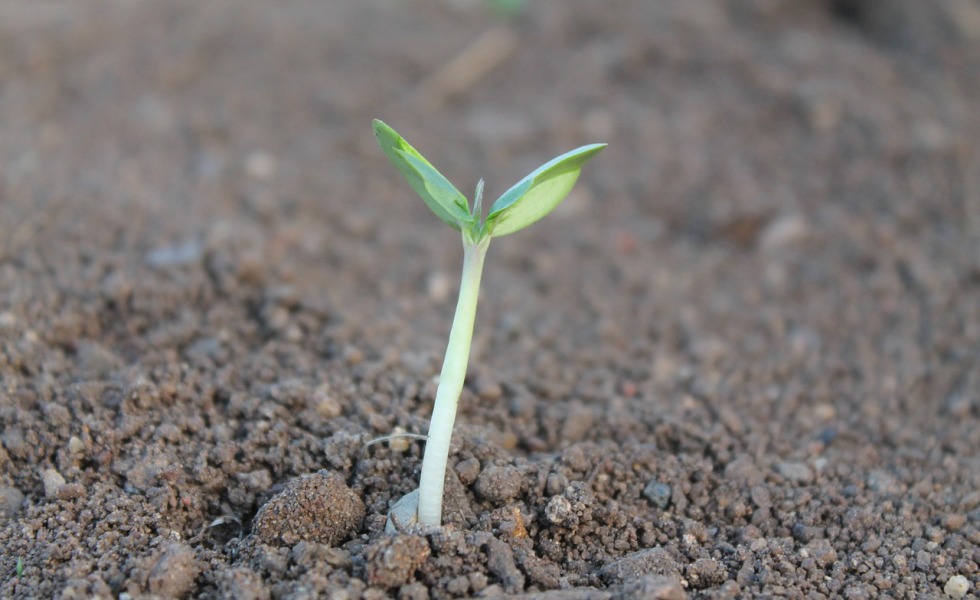Seventy Crops
Posted on April 18, 2018

Shortly after he turns 86 on April 10, Eugene Glock will begin planting his 70th corn crop on the Butler County, NE farm he operates with his son. “He runs the place,” explains Gene by telephone, “and I’m the hired hand. I plant all the corn, though.”
And, the Lord willing, he adds, he will harvest it all, too.
If so, Gene will use a trusty combine not quite half his age, a six-row, International Harvester 1460 he bought in 1978 for (you might want to sit down) $23,000. That sum included an 18-ft. grain head, too.
Even more remarkable, it’s a good bet that Gene and the machine have even more years ahead of them. “My mother lived past 100,” he reports.
It’s not the longevity of either him or his machinery that makes most conversations with Gene interesting and insightful. It’s what he’s experienced and inspired across those decades that keeps you listening, learning, and laughing.
For example, he relates, “I planted my first corn crop while in high school for my FFA project. It was 12 acres of my dad’s best creek bottom land, and I used anhydrous ammonia that year, something my father never had. I raised 100 bushels an acre and sold it all for $2.54 a bushel.”
After splitting the windfall with his “landlord” father, Gene used his share to buy an “M Farmall and enough seed to plant 80 acres the following year.”
That crop brought other memories, too. “My high school graduation speaker—I don’t remember his name—said we FFA fellows had the world by the tail because corn prices had reached a ‘new plateau’ and they’d always be high.”
The words still echo across the decades. “The next year I sold corn for 90 cents. In my career, I’ve been told corn prices ‘have reached a new plateau’ five different times and I’m still waiting for that plateau.” His neighbors, the vitality of his local communities, and a lot of topsoil, however, are long gone.
That clear-eyed view of modern agriculture—that farmers seem prepared to outbid and out-borrow neighbors in hopes of out-lasting them—led Gene into off-farm efforts to influence commodity markets and farm policy. In the early 1970s, he helped form the Nebraska Soybean Association and was elected its first president.
(It wasn’t a close race. “I left the meeting to use the restroom and when I came back all of ‘em said, ‘Welcome back, Mr. President!’”)
In the late 1980s, when his son returned to the farm, Gene made room by serving as Sen. Bob Kerrey’s statewide ag deputy from 1989 to 2001. “He told me I had just two jobs: be his eyes and ears to all Nebraska farmers and ranchers, Democrats and Republicans alike, and to tell him the truth.”
During those 12 years, Gene drove 652,000 miles across the state, often with the senator riding shotgun, to meet and help farmers and ranchers. “We always talked about possibilities, rarely ever about failure.”
To illustrate, Gene explains that Kerrey, a socially progressive Democrat, and his Nebraska colleague, Sen. Chuck Hagel, a socially conservative Republican, often disagreed on state and national policies. “In private, boy, they could really go after each other,” he says.
But afterwards, also in private, “One or the other would finally ask, ‘Well, what’s the bottom line you need for us to go forward together?’ And they’d figure out something neither liked but that both could live with and the problem got fixed.”
That wasn’t bipartisanship, Gene emphasizes, so much as pragmatic leadership. “People had problems and the senators’ job was to help. That’s what we did.”
Ah, he sighs, not today. “Now everybody spends way too much time worrying about themselves and not enough time worrying about the people coming after us,” he offers.
This spring, however, Gene sees some flickers of hope. “It’s those kids in Florida,” he explains, “they’re talking about change and making change. That’s a hopeful sign.”
And who knows more about hope than an 86-year-old farmer with a 40-year-old combine ready to plant his 70th crop.
© 2018 ag comm
Share This